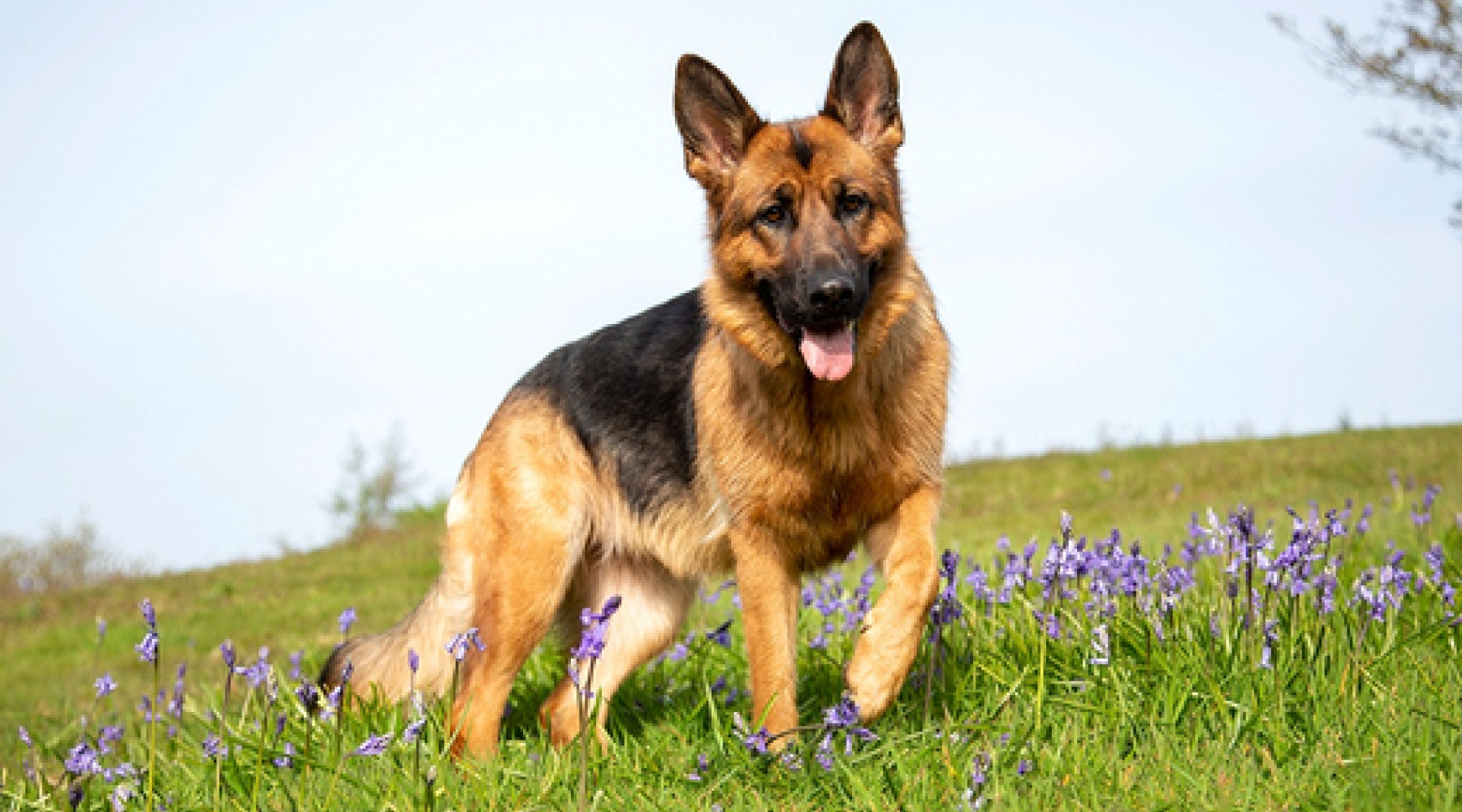What is Degenerative Myelopathy and IVDD in German Shepherds?

German Shepherds are most often characterized for their loyal, confident, and eager to learn personalities, which make them the ideal working dog. However, German Shepherds long, sloping backs predispose them to a multitude of spinal problems. Two of the most prominent spinal issues that German Shepherds are prone to are Intervertebral Disc Disease (IVDD) and Degenerative Myelopathy. Before we can discuss these spinal diseases, we first must understand what exactly the spine looks like and how it works.
A dog’s spine is a fairly simple structure that protects the spinal cord, which is responsible for communicating information to and from the brain. The spinal cord is encased in a boney vertebra with the only exposed portions being the tiny spaces between the vertebrae. These spaces allow for movement of the spine, but are also potential points for spinal cord damage which is why spinal discs sit in these small spaces to cushion the spinal cord. Spinal discs, more commonly known as intervertebral discs, are the pillows for the spine and are made of a fibrous outer covering, known as the intervertebral ring, which is filled with a pulpy nucleus that compresses as your dog moves.
IVDD is the degeneration and eventual protrusion of the intervertebral disc which causes pinching on the spinal cord. The most common types of IVDD are Type 1 and Type 2.

Normal Spine |
Type 1 IVDD |
Type 2 IVDD |
 |
 |
 |
|
In a normal spine, the pulpy nucleus is safely encased in the intervertebral ring and protects the spine. |
Type 1 is when the intervertebral ring bursts causing the pulpy nucleus to protrude from the intervertebral ring and presses on the spinal cord. This Type is more common in smaller dogs such as Dachshunds. |
Type 2 is when both the pulpy nucleus and the intervertebral ring bulge without rupturing and press on the spinal cord. This Type is more common with larger dogs such as German Shepherds. |
IVDD is most often seen in middle-aged to older dogs who have long backs and are highly active, such as working dogs. Approximately 32% of German Shepherds will have a ruptured disc causing spinal pinching. This spinal pinching is painful for your dog and causes nerve issues that can be seen as a hunched back, difficulty walking, and severe cases can lead to paralysis and incontinence.
Another spinal disease that German Shepherds are unfortunately prone to is Degenerative Myelopathy (DM). DM is the chronic and progressive degeneration of the spinal cord. This disease is genetic and therefore is not caused by activity or spinal structure. Unfortunately, approximately 35% of German Shepherds have the genetic mutation that causes DM. Symptoms of DM may begin as early as 5 years of age, it often begins as hind limb weakness that eventually progresses to paralysis and incontinence. Ultimately, there is no cure for DM, though physical therapy has been shown to help slow the progression of this disease.

If your German Shepherd has IVDD or DM, there are things you can do to help them live a happy, healthy life:
Heat Therapy - Heat encourages blood flow which in turn relieves pain and muscle spasms. You can easily do at home heat therapy with a simple heating pad placed on your dogs back.
Spinal Support Brace - The Custom L’il Back Bracer, while originally designed for Dachshunds with IVDD, can be customized to fit large breeds, such as German Shepherds. This brace is designed to support your dog's spine both from above and below while allowing your dog to move around comfortably.

Wheelchair - Our Haute Wheels Pet Wheelchair is designed to lift your dog's hind legs so they can pull themselves with their front legs to move around. This allows your dog to have some independence even when their hind legs are immobile.
Crate Rest - Reducing your dog's overall mobility temporarily gives their body time to heal itself. Have a well padded crate for your pup to rest in so they can be comfortable without putting pressure on their spine. You may need to frequently change out the bedding if your dog is incontinent due to their spinal problems.

Pulsed Electromagnetic Field Therapy (PEMF) - Gently pulsing electromagnetic fields reduces pain and swelling while increasing blood flow to your pup's soft tissue. The EMpower Device is the world's first wearable pain management therapy for dogs that attaches via velcro to an EMbrace Relief System or an EMbed blanket.



